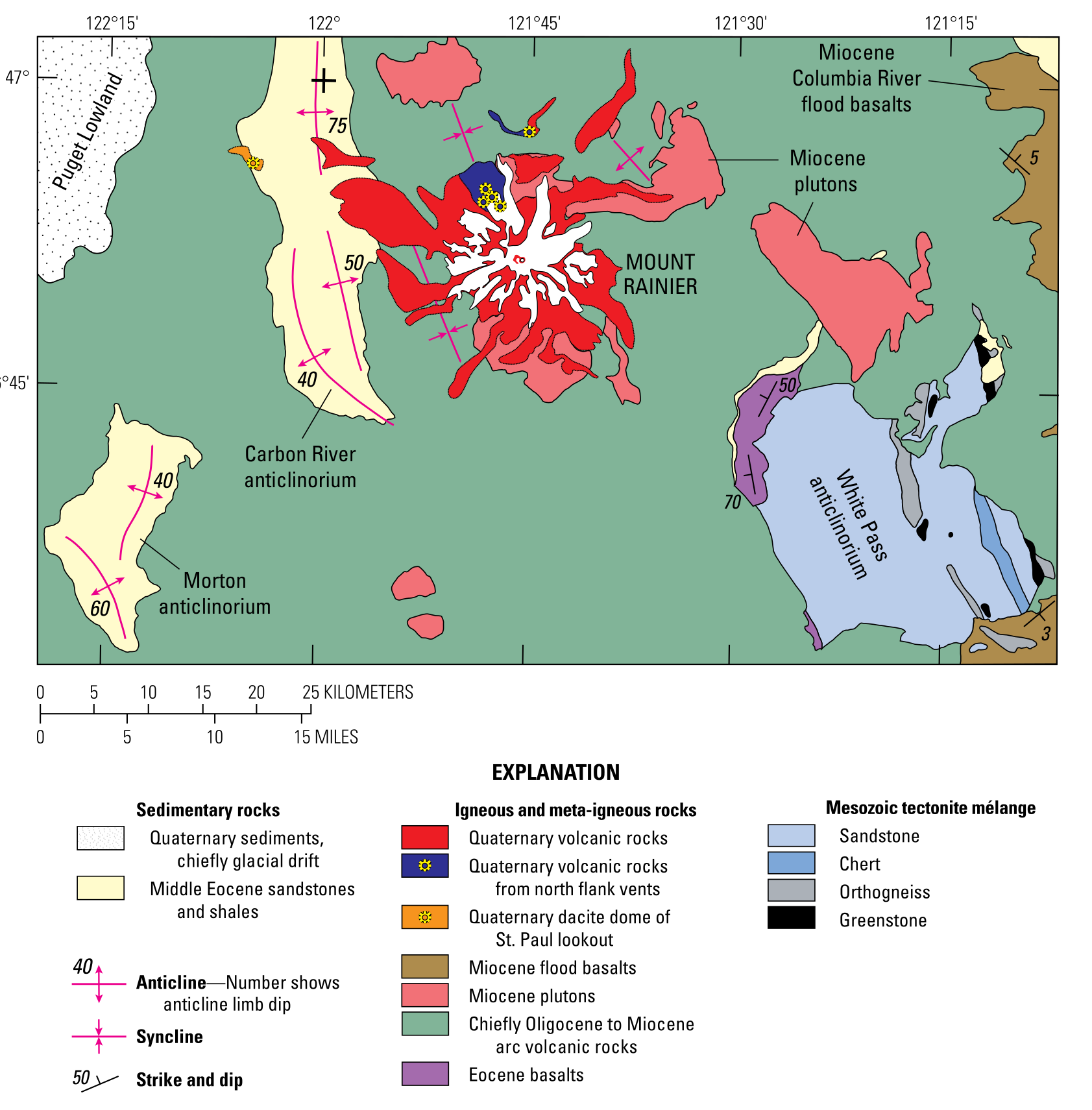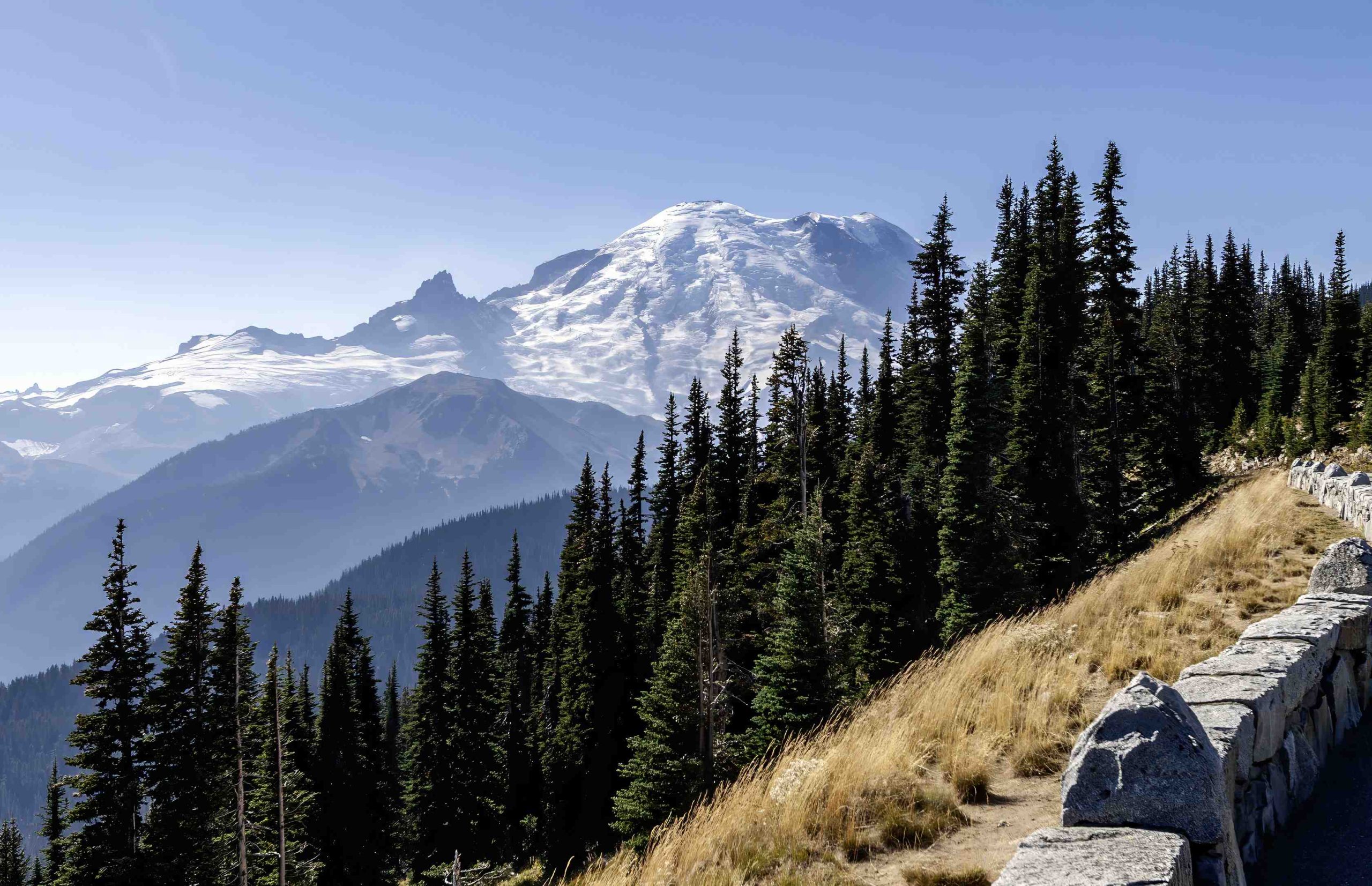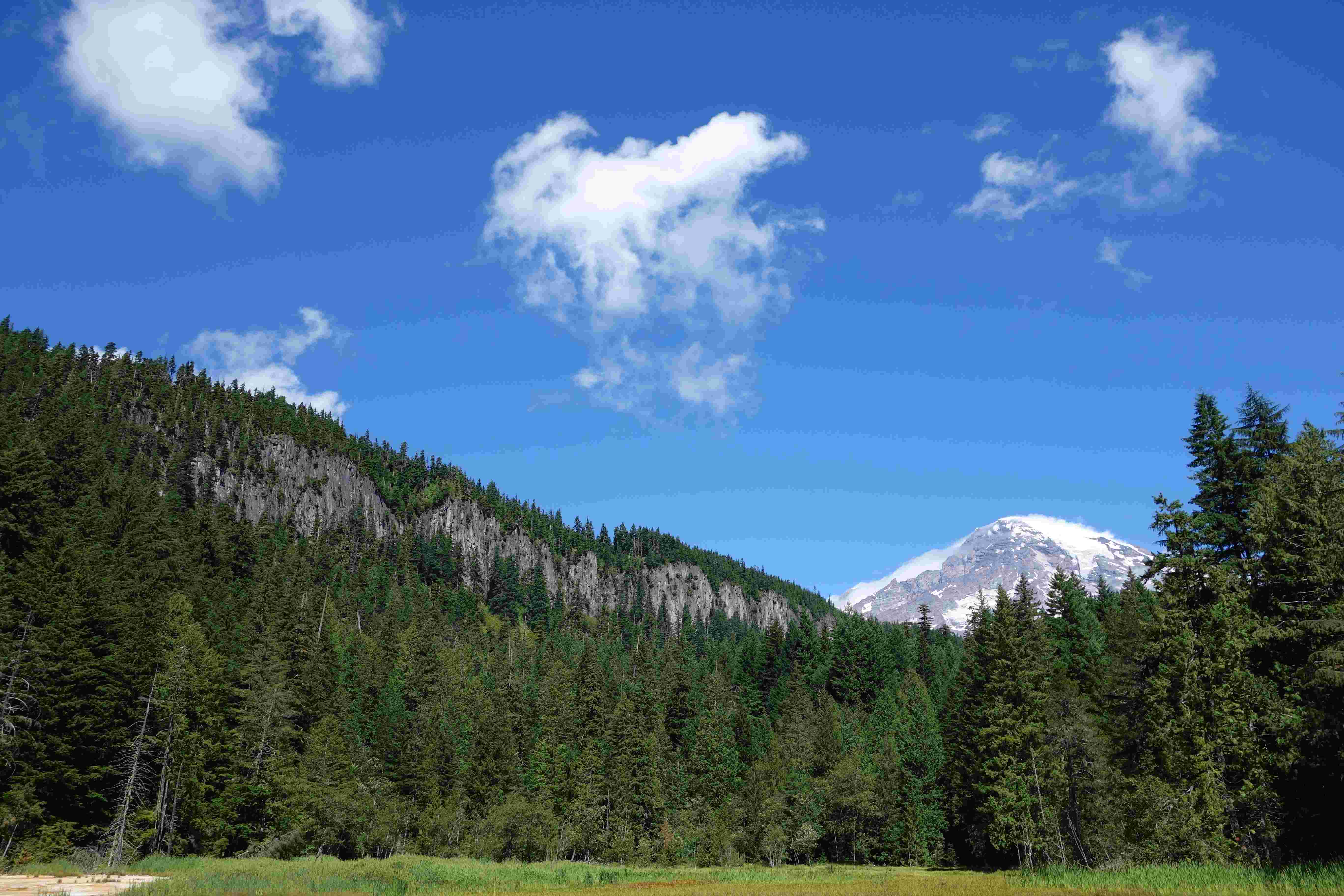Mount Rainier National Park, located in Washington state, is a stunning wilderness area centered around the iconic Mount Rainier, an active stratovolcano standing at 14,411 feet. The park encompasses 236,381 acres of diverse ecosystems, from old-growth forests to subalpine meadows. With its breathtaking landscapes, abundant wildlife, and extensive trail system, Mount Rainier National Park offers visitors a wealth of natural beauty and outdoor recreation opportunities.
What Are the Must-See Attractions in Mount Rainier National Park?

Mount Rainier National Park boasts numerous attractions that showcase its natural wonders:
- Paradise Area: Known for its wildflower meadows and stunning views of Mount Rainier
- Sunrise Visitor Center: The highest point in the park accessible by vehicle, offering panoramic vistas
- Reflection Lakes: Picturesque lakes that mirror Mount Rainier on calm days
- Grove of the Patriarchs: An easy trail through ancient old-growth forest
- Narada Falls: A powerful 168-foot waterfall accessible via a short trail
How Can I Experience the Best Hiking Trails in Mount Rainier National Park?

Mount Rainier National Park offers over 260 miles of maintained trails, catering to various skill levels:
Popular Hiking Trails
| Trail Name | Distance | Difficulty | Notable Features |
|---|---|---|---|
| Skyline Trail | 5.3 miles | Moderate | Wildflowers, meadows, close views of Mount Rainier |
| Burroughs Mountain Trail | 5.4 miles | Moderate | Alpine landscape, spectacular mountain views |
| Bench and Snow Lakes | 2.6 miles | Moderate | Alpine lakes, wildflowers, huckleberries |
| Camp Muir Trail | 9 miles | Strenuous | High-altitude hike, glacier views |
| Wonderland Trail | 93 miles | Strenuous | Multi-day hike encircling Mount Rainier |
For a memorable hiking experience:
– Carry the Ten Essentials (navigation, sun protection, insulation, illumination, first-aid supplies, fire, repair kit, nutrition, hydration, emergency shelter)
– Inform someone of your hiking plans
– Never hike alone
– Check trail conditions before setting out
What Are the Camping Options in Mount Rainier National Park?
Mount Rainier National Park offers several camping options for visitors:
Campgrounds
- Cougar Rock Campground
- Reservations through recreation.gov
- Amenities: restrooms, potable water, picnic tables
-
No hookups or showers
-
Ohanapecosh Campground
- Reservations through recreation.gov
- Amenities: restrooms, potable water, picnic tables
-
No hookups or showers
-
White River Campground
- First-come, first-served
- Basic amenities with vault toilets, no potable water
-
Suitable for smaller RVs and tents
-
Mowich Lake Campground
- First-come, first-served
- Basic amenities with vault toilets, no potable water
- Suitable for smaller RVs and tents
Camping fees generally range from $20 to $30 per night, with additional fees for some services.
What Wildlife Can I Expect to See in Mount Rainier National Park?
Mount Rainier National Park is home to diverse wildlife:
- Mammals: Black bears, mountain goats, marmots, deer
- Birds: Eagles, hawks, osprey, various songbirds
- Other: Amphibians, reptiles, fish species in lakes and streams
Wildlife viewing tips:
– Keep a safe distance from animals
– Never feed or approach wild animals
– Carry bear spray and make noise while hiking
– Store food and trash properly
– Follow park rules and regulations
What Facilities and Services Are Available at the Mount Rainier National Park Visitor Centers?
Mount Rainier National Park has several visitor centers offering various services:
- Henry M. Jackson Visitor Center at Paradise
- Sunrise Visitor Center
- Ohanapecosh Visitor Center
- Longmire Wilderness Information Center
These centers typically operate from late spring to early fall, with reduced hours during the off-season. They offer:
- Educational exhibits about the park’s geology, flora, fauna, and history
- Ranger-led programs, including guided hikes and nature walks
- Information desks, park maps, and brochures
- Bookstores and snack shops (at some locations)
- Wheelchair accessibility, with accessible restrooms and parking
How Can I Plan a Successful Visit to Mount Rainier National Park?
To make the most of your visit to Mount Rainier National Park:
- Check the park’s official website for current conditions and alerts
- Plan your visit during the peak season (July-September) for the best weather and access to all areas
- Make campground or lodging reservations well in advance
- Bring appropriate gear for hiking and changing weather conditions
- Purchase a park pass or pay the entrance fee
- Follow Leave No Trace principles to help preserve the park’s natural beauty
- Consider joining a ranger-led program to enhance your understanding of the park
By following these tips and exploring the diverse attractions of Mount Rainier National Park, you’ll create lasting memories of this magnificent natural wonder.
References:
1. https://visitrainier.com/activities-attractions/hiking/
2. https://www.nps.gov/mora/planyourvisit/day-hiking-at-mount-rainier.htm
3. https://wheatlesswanderlust.com/best-hikes-mount-rainier-national-park/

